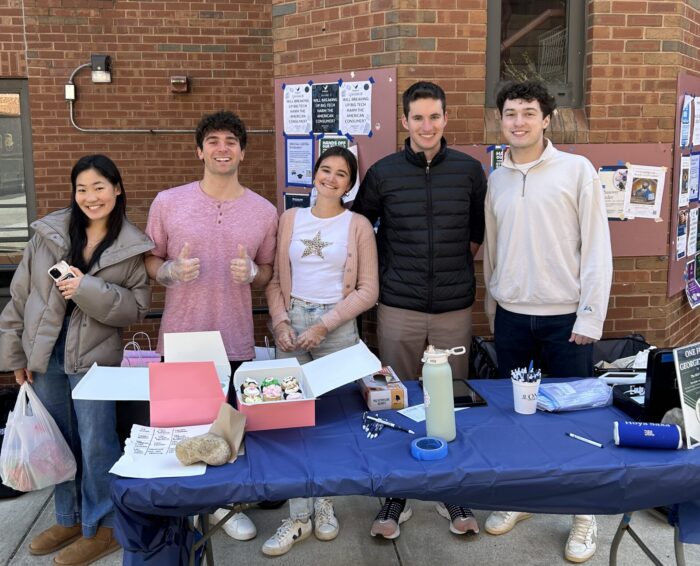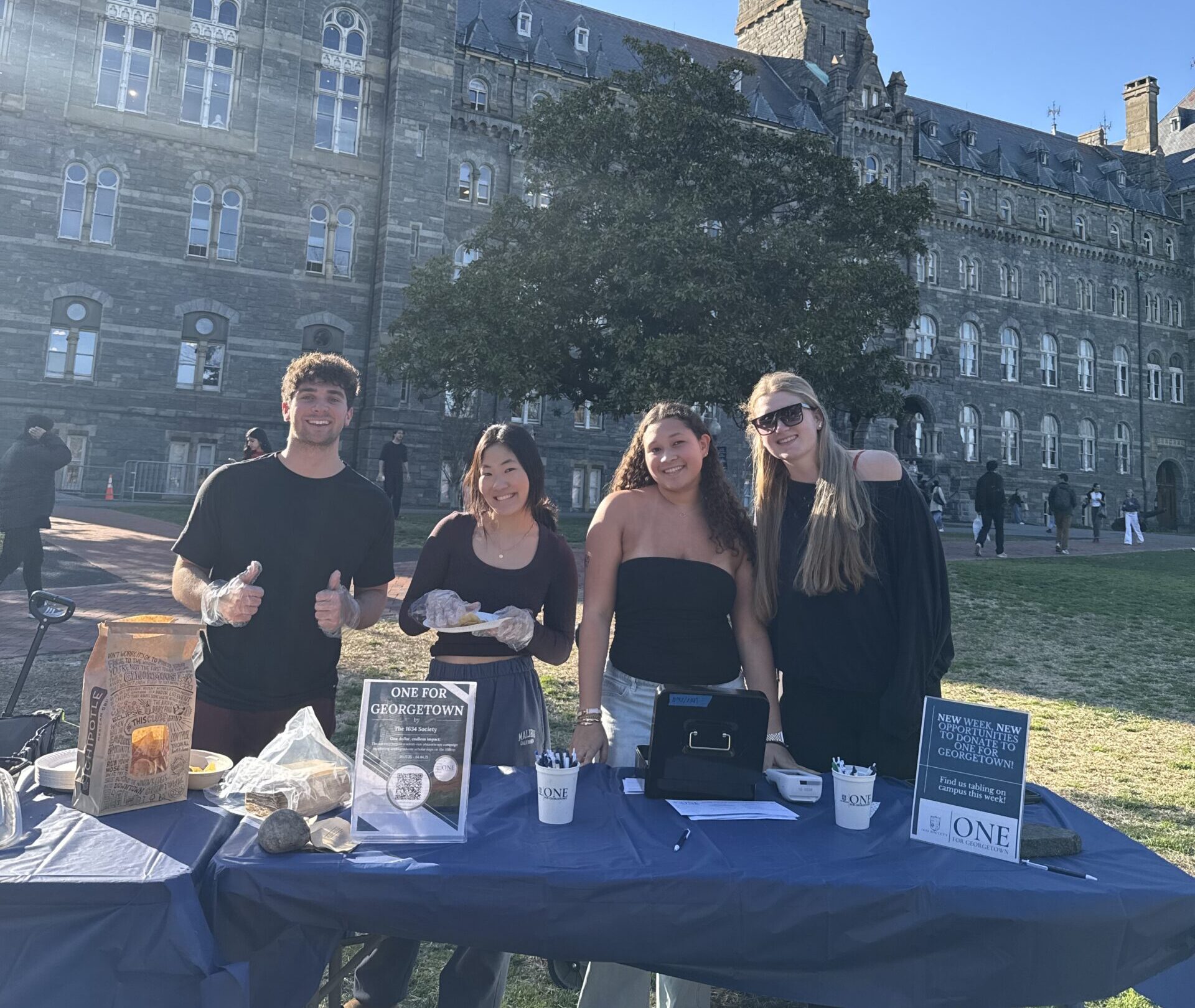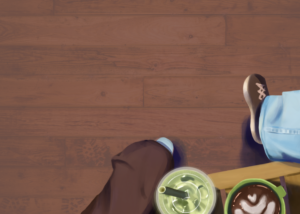For the price of just $1 a student, the annual One for Georgetown initiative combines philanthropy, food, and community engagement. From tabling outside of Leo’s to collecting donations on Harbin Patio, this year’s campaign galvanized almost 2,000 students to give back to the Georgetown community between March 17 and April 4.
Through One for Georgetown, freshmen, sophomores, and juniors can donate $1 to scholarships for other undergraduates. In return, donors receive free food and giveaways from vendors ranging from local businesses like Wisemiller’s Grocery & Deli to on-campus organizations like The Corp and Georgetown Bubble.
The 1634 Society, which seeks to promote campus traditions, connect students with alumni, and foster philanthropic efforts on campus, runs One for Georgetown, which began in 2013.
The support for One for Georgetown goes beyond Georgetown’s campus. Since the initiative’s inception, alumni have pledged to donate tens of thousands of dollars to the campaign for reaching a certain number of student donors.
This year, Geoff Morrell (CAS ’91), a member of Georgetown’s Board of Regents, pledged $100,000 towards additional scholarships if One for Georgetown reached 1,850 donors.
“The number is determined based on our previous campaigns and how well we’ve been doing. It’s 1,850 this year because we did really well last year and decided we could reach more students,” Alexa Nakanishi, President of 1634 Society, said. “This campaign has been running since 2013, not including the COVID interruptions, [and] we’ve seen a steady increase in engagement from the community, which is great.”
Last year, One for Georgetown amassed donations from a total of 1,925 undergraduate students. This year, according to Nakanishi, 1,965 students donated, both surpassing last year’s total and this year’s goal, and setting a record for the highest participation since before the COVID-19 pandemic.

Photo courtesy of Alexa Nakanishi/The 1634 Society Students give out Chaia Tacos while tabling for One for Georgetown.Photo courtesy of Alexa Nakanishi/The 1634 Society
To spur student engagement towards their donor goal, the 1634 Society offered a different donating incentive each day. These giveaways included Crumbl Cookies, Chaia Tacos, Krispy Kreme donuts, and cookies from Wisey’s. The 1634 Society also hosted a 1789-minute—roughly 30-hour—“celebration of the Georgetown community” from March 18 to 19, offering Georgetown cupcakes and a Blue & Gray Day-themed travel mug to those who donated within the time frame, honoring the university’s founding in 1789.
“It’s not a transactional thing where you pay $1 and you get food for two-and-a-half weeks. We want to encourage that the food is a reward,” Angela Sidhu (CAS ’27), a 1634 Society trustee, said. “We really try to practice being energetic and getting people to be interested in our mission, because we’re so passionate and we want to spread that.”
Throughout the initiative’s three-week duration, trustees took shifts tabling for One for Georgetown. Before it began, they attended briefs on best practices for approaching potential donors.
“We practice answering some pretty tough questions. A lot of people aren’t really familiar with One for Georgetown, or they have a lot of hesitancy in terms of donating because Georgetown is already such an expensive institution. They may be confused as to where this goes or wonder if this actually does anything at all,” Sidhu said. “We want to emphasize that this is a legitimate campaign, and it truly does benefit all Georgetown undergraduates.”
Some students who are less familiar with One for Georgetown may not know that the $1 donations are tied to alumni donation pledges, and may not understand how such small donations can make a difference.
“There’s a lot of discussion over how $1 can lead to anything kind of worthwhile and simultaneously there are a lot of incentives that you get for donating,” Reesa Bhowmik (SFS ‘26), who has donated to the campaign since her freshman year, said. “My $1 could lead to $100,000 in scholarships, so it feels like a no-brainer.”

Photo courtesy of Alexa Nakanishi/The 1634 Society One for Georgetown tablers give out Georgetown Cupcakes to donors.Photo courtesy of Alexa Nakanishi/The 1634 Society
To make One for Georgetown more accessible, the 1634 Society alters the campaign’s structure based on community feedback.
“The barrier to entry for first-time donors especially is really high,” Bhowmik said. “I remember freshman year I only donated because they did a residential hall competition, so one of my RAs reposted it and was like, ‘We have to make New South win,’ and I was like, ‘Okay, whatever,’ but I didn’t know where my dollar was going. I don’t think I even got any of the free food that year. There is definitely a gap for students who have never heard of the program before to access information about it.”
This year, One for Georgetown advertised its mission via email and Instagram, notifying students via both platforms about Launch Day, important milestones, and vendors they could look forward to. Status updates also included information about class and residential hall rankings based on how many students donated. Nakanishi told the Voice that the 1634 Society does not yet have the final class and residential hall rankings, but she noted that over 50% of the freshman class participated in One for Georgetown this year.
While the campaign has come to a close, the 1634 Society holds events throughout the year to promote philanthropy among the school community.
Nakanishi underscored that One for Georgetown is not a one-and-done deal in terms of supporting the campus community: it’s part of a collective effort to cultivate a culture of contributing to a cause greater than yourself.
“If you’re at Georgetown, you’re benefiting in some way from philanthropy, whether you receive scholarships, or you’re in a club that is largely funded by philanthropy, or you go to class in a building that was funded by philanthropy,” Nakanishi said. “It’s so important to give back and recognize that we’ve all been given an immense opportunity to attend such a great university that provides us with so many opportunities.”




